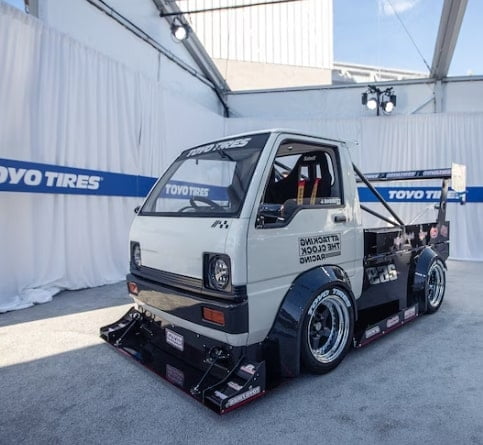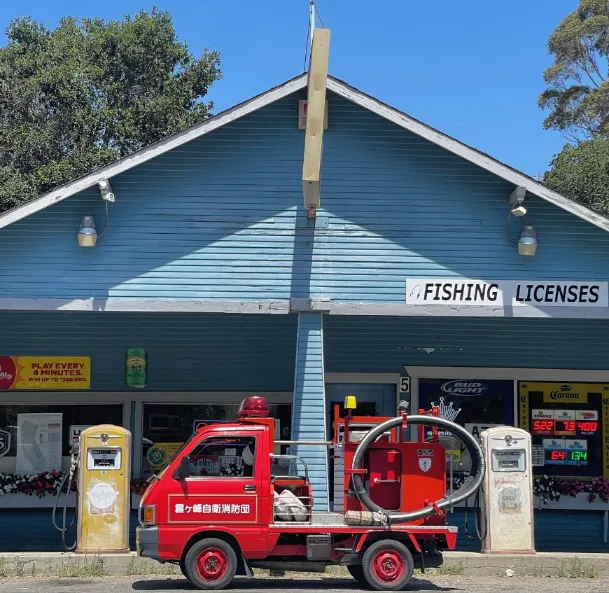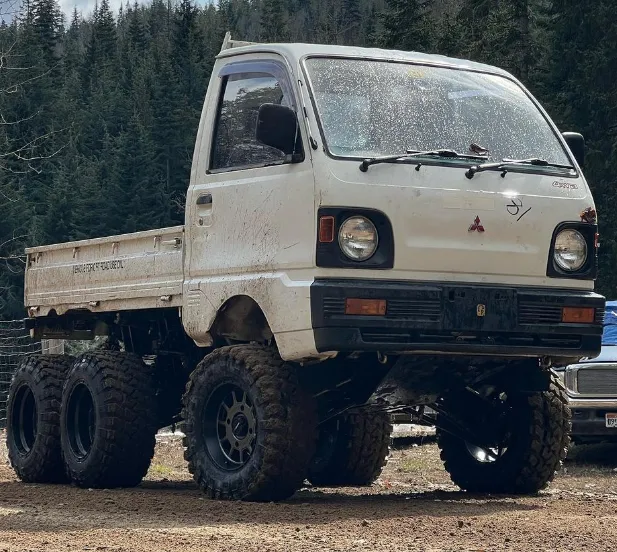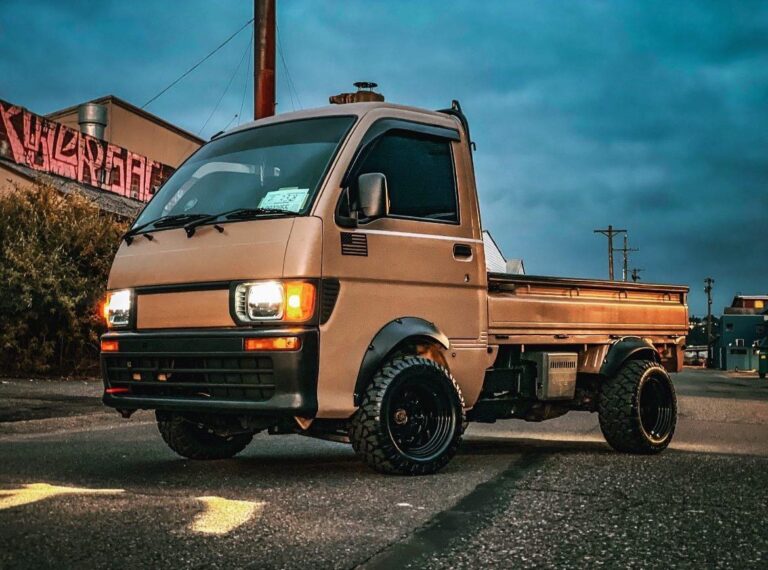Explore the world of Kei trucks and their surprising capabilities. Don’t let their compact size fool you; Kei trucks offer a mix of efficiency and agility, making them perfect for various tasks where larger vehicles just can’t compete. Find out what these nimble machines can really do, as we explore the specifics of their speed and performance. Whether you’re thinking about becoming an owner or you’re simply curious, you’ll find it useful to learn the truth about how fast a Kei truck can go. Dive into this concise guide to arm yourself with the knowledge that belies the small stature of these versatile vehicles.
Understanding the Kei Truck Category
As I explore the world of Kei trucks, it’s important to understand what makes this category unique. Originating in Japan, Kei trucks are defined by specific size and engine displacement limits, which have evolved since their inception in 1949. These vehicles are known for their compact dimensions, with a maximum length of 3.4 meters, a width of 1.48 meters, and a height of 2.0 meters. Under the hood, they’re powered by engines no larger than 660 cc. Despite their small size, these trucks are surprisingly capable, with an average weight of around 700 kg (1,500 lb) and an ungoverned top speed that can reach up to 120 km/h (75 mph).

Basic Specifications of Kei Trucks
Engine Displacement and Power Output
Models such as the Honda Acty, Suzuki Carry, Daihatsu Hijet, and Mitsubishi Minicab adhere to the Japanese kei car standards. These engines are tailored for efficiency and maneuverability in environments where larger vehicles would be impractical.
Dimensions and Weight Limits
The design of kei trucks allows them to adeptly handle narrow byways and sharp turns. They have a maximum carrying capacity that is substantial for their size, yet there is a limit to maintain safety and adherence to regulations. This balance is what renders them suitable for a variety of sectors.
Features Affecting Speed
The maximum speed of kei trucks is influenced by their type. For example, scissor lift kei trucks typically have a lower maximum speed, ranging from 60 to 70 kilometers per hour, due to their specialized equipment. Firefighting and emergency kei trucks may also have varying top speeds based on their model and equipment.
Kei trucks are designed for areas with lower speed limits, emphasizing practicality over high-speed performance. Operators must comply with local traffic laws and drive at speeds that are safe for the conditions. The legality of kei trucks varies across the U.S., with some states allowing their use on public roads and others restricting them to private property.

Performance and Speed Capabilities
Factory-Set Speed Restrictions
In the U.S., federal regulations mandate that Japanese mini trucks imported for off-road use have their maximum speed capped at 25 mph. This is significantly lower than the speeds they are capable of achieving without restrictions, which can be up to 75 mph. The speed limiter, a programmable component within the truck’s engine management system, ensures these restrictions are enforced. Altering these limiters with tuning devices could lead to warranty issues and legal complications.
Average Top Speed Ranges for Kei Trucks
The average top speeds for these vehicles can differ depending on the make and model. For instance, the Daihatsu Hijet can reach around 81 mph, while the Subaru Sambar can even hit 87 mph under certain conditions. However, these figures are not uniform across all models and are subject to various influencing factors.
Factors Influencing Kei Truck Speed
Several elements can impact the top speed of kei trucks, such as engine power, vehicle weight, and aerodynamic drag. The specific type of kei truck also plays a role. For example, dump trucks or scissor lift trucks might experience a slight decrease in top speed due to the extra weight and altered aerodynamics.
Similarly, 4WD kei trucks and those carrying additional equipment like refrigeration units or hydraulic lifts may see their top speeds affected. Firefighting and emergency kei trucks, outfitted with specialized gear, typically have a lower top speed due to their unique configurations.
The vehicle’s condition, road conditions, and adherence to local speed regulations can also influence the actual operating speed. For precise information on the top speeds of specific models, consulting the manufacturer’s specifications or contacting a local dealer is recommended. While kei trucks are not designed for speed, understanding their performance parameters is essential for those utilizing them for work or deliveries.

Modifying Kei Trucks for Increased Speed
Common Aftermarket Modifications
Owners seeking to enhance their Kei trucks’ capabilities often turn to aftermarket modifications. These adjustments can enable the vehicles to surpass their factory speed settings. Engine upgrades are a common approach, which may include fitting a turbocharger or incorporating high-performance components. A high-flow exhaust system can also be installed to augment engine efficiency, and a reinforced suspension system may be added to cope with the heightened performance.
Proper tire maintenance is essential for optimal handling and safety, particularly when operating a modified Kei truck. Ensuring the engine is well-lubricated with regular oil changes is another critical aspect of maintaining performance after modifications. Although these enhancements can increase a Kei truck’s speed, it’s essential to remember that they are still primarily intended for urban use and short-range transport.
The Impact of Tuning on Speed and Performance
Tuning can significantly enhance a Kei truck’s power output and driving dynamics. Adjustments to the engine management system can unlock additional horsepower and sharpen the vehicle’s throttle response. Some enthusiasts may alter the gear ratios or fit larger tires to increase the vehicle’s maximum speed. While removing the speed governor is another method to boost performance, it’s vital to consider the vehicle’s original design intentions and ensure modifications do not compromise its primary functions.
Tuning is not solely focused on speed; it also aims to tailor the vehicle to specific applications or to achieve a more engaging driving experience. Kei sports cars, for instance, have been successfully modified to deliver greater power, demonstrating the versatility of these vehicles when properly tuned. However, it’s imperative to balance the pursuit of speed with the need for safety and operational efficiency.
Legal Considerations for Modifying Kei Trucks
Understanding the legal implications is crucial before modifying a Kei truck. Enhancements that increase speed or alter handling characteristics must comply with regional regulations. Modifications can affect insurance premiums or lead to policy issues if not declared. Insurers may consider modified vehicles as presenting a higher risk, and undisclosed alterations could result in claim rejections.
Insurance coverage is a key consideration when modifying a vehicle. Engine upgrades, aesthetic changes, and performance improvements can all influence insurance costs and terms. Selecting an insurer that accommodates modified vehicles and being transparent about any modifications is crucial. Accurate descriptions of the enhancements assist insurers in providing suitable coverage and establishing fair premiums, ensuring the vehicle remains insured.
Driving a Kei Truck Safely
Importance of Adhering to Speed Limits
Driving responsibly in a Kei truck means not exceeding the recommended speeds for the vehicle’s design. While these trucks can technically reach higher velocities, it’s crucial to operate them within the intended speed range to avoid straining the engine and compromising safety. Many states have implemented speed restrictions to prevent accidents, considering the trucks’ limited safety features. Abiding by these limits is essential for the well-being of all road users.
Driving Tips for Kei Trucks
To ensure a safe journey, conduct thorough inspections before and after use. Always use seat belts, practice defensive driving, and allow for longer braking distances when carrying loads. Given the trucks’ dimensions and potential blind spots, extra caution should be exercised when changing lanes or navigating turns. Clear signaling and securement of cargo are preventative measures against accidents. Adjusting to varying road conditions and being prepared for unexpected situations are key to a safe driving experience.
Maintenance Tips for Optimal Performance
To keep your Kei truck running smoothly, adhere to a consistent maintenance routine. This includes monitoring the engine to ensure it operates within its design parameters. When engaging in off-road activities or utilizing the 4WD feature, selecting appropriate tires for the terrain is crucial. The right tire size and tread pattern can improve clearance and traction, respectively. Modifications such as tire changes should be carefully considered to avoid any interference with the truck’s structure. Regular service checks, including oil changes, tire rotations, and brake inspections, will contribute to the longevity and reliability of your Kei truck, regardless of its specific configuration.
Kei Trucks: Function Meets Speed
Recognizing the unique balance between utility and speed, kei trucks embody the philosophy that size doesn’t define capability. Models from Honda Acty to Mitsubishi Minicab deliver adaptability and efficient performance within their specified limits. The variety of types from standard to specialized kei trucks, including 4WD and refrigerated options, highlights a tailored approach to meet diverse needs. While aftermarket modifications present opportunities for increased speed, they come with important legal and safety considerations.
Driving a kei truck responsibly ensures not only compliance with regulations but also the longevity of these compact powerhouses. Whether your needs are commercial or for sheer enjoyment, kei trucks offer a blend of practicality and potential that stands out in the automotive world. Though they’re not speedsters, they prove that with the right vehicle, the slow lane can be just as rewarding.











